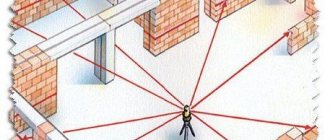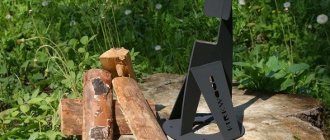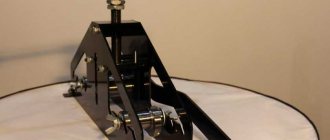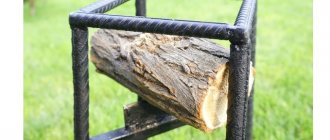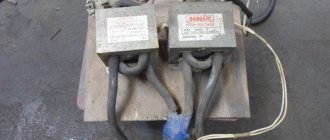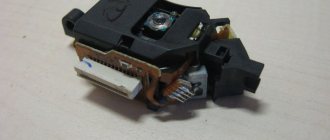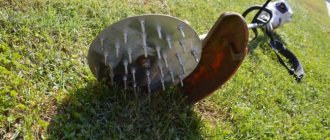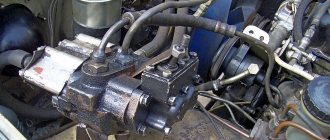Wheel model without hub
At the first stage of work, it is necessary to draw a drawing of the future wheel design on graph paper. On its basis and with the help of instructions on how to make a wooden wheel with your own hands, all manipulations should be carried out.
Tools and material for making a wheel.
Tools: - Screwdriver or shaped screwdriver - Construction tape (meter) - Circular saw, or jigsaw, or wood saw - Construction angle 90 degrees - Pencil or ballpoint pen - Protractor, regular school one
Material: - Wooden beam - Half sheet of plywood - White wood screws
As you probably understood, in the tool you can use, ideally a circular saw, if not, then a jigsaw, but if you don’t have that, then you can use a hacksaw for wood, it will take a long time, but it’s possible.
Wooden wheel drawing
I hope you don’t have any questions based on the drawing; along the perimeter, all the bars are 37 cm, and the inner spokes of the wheel are 39 cm. During assembly, you may have to shorten the spokes a little, but this is not a fact.
Stages of making a wheel with your own hands
First stage So, the first stage will be to purchase the necessary timber, there are two options, either you buy a ready-made timber of the required size, or you process the timber using a circular saw. In our case, we purchased a ready-made timber measuring 3 meters long, 9 cm wide and 4.5 cm thick; this timber, if cut correctly, is enough for two wheels. Second stage The second stage will be the production of blanks for the wheel body and spokes, let's start with the body, a total of 8 blanks are needed, they must be adjusted to the size - 37 cm long, 4 cm wide and 2 cm
thickness, pay special attention to trimming (sawing off) the lengths, they must be perfect, otherwise the future structure simply will not come together.
We make knitting needles
Now we need to make knitting needles, as you already understood, there should also be 8 pieces, only the size is slightly different - 39 cm long, 2 cm wide and 2 cm thick. You can do one trick with the knitting needles, since they will close and connect into one whole, and then center themselves, then you can cut four knitting needles to 39 cm each, and the remaining four to 37 cm each. This will make it easier to connect.
Now we need to cut off the ends of the body for further joining, be careful at this stage. Take one blank and place a mark at one end exactly 1.7 cm (17 mm.)
Do the same procedure on the other side of the workpiece and draw a line from the mark to the corner, it should look like in the photo.
Carefully cut the corners along the marked line, just take your time, these cuts determine how smoothly the workpieces will fit together. We make fasteners We put all the processed parts aside for now and start making fasteners, the material in our case will be a plywood sheet, but you can also use the remains of a wooden beam. In total, you need to make 8 parts for fastening the body, 8 parts for the wheel spokes and one centering part (fasteners for the spokes in the center). The size of the body fastening part is 7 cm on the outer sides and 5 cm on the inner sides, and the cutting angle is exactly 45 degrees. The size of the spoke fastening part is 8 cm long, 2.5 cm wide, look at the photo to see what you should get.
We will do the centering for the spokes by outlining a can of putty in a circle. We cut it in a circle with a jigsaw and it turns out to be such a beauty.
Assembling the body and spokes Now we need to return to the body parts, prepare a flat surface and place all the parts next to each other, corner to corner, if you did everything correctly, then you should end up with a wheel edging like this.
If everything fits together, then take the fastening blanks for the body and fasten them with white self-tapping screws.
We screw it around the entire perimeter one by one, preferably clockwise, so as not to get confused. We divide each part of the body in half and apply it to the middle of the knitting needle, it should turn out like this.
We fasten the knitting needles with fasteners.
Well, the final touch will be to tighten the centering to the spokes, thereby securing the entire structure as a whole.
We hope that it was not difficult for you to make a wooden wheel with your own hands using these instructions. You can treat the finished surface with varnish, paint, stain, wax or any other method you wish. Photo of the finished product And now you can admire the final photo by capturing the top view.
Making the rim
According to the drawing with a wheel diameter of 700 mm, 4 patterns should be made for subsequent turning of the rim elements. Using the patterns, the drawing is transferred to a wooden blank and 4 arcs of a given size are cut out with a jigsaw. When these elements are ready, they must be fastened together using PVA glue. To ensure secure fixation, an additional metal profile or beacons are used, which will then need to be removed.
Trolley for cylinders
- A do-it-yourself trolley for transporting and storing cylinders is a welded structure made from a profile or ordinary pipe, made to the size of a tank for 1 or several places.
- The drawing of a single-seat trolley shows that you will need about 6 meters of square pipe 20x20 mm or round pipe d20 mm, 1 or 2 pairs of wheels with brackets, depending on the specifics of operation.
- If you plan to transport the cylinder in a car, it is better to take 2 pairs to make loading it into the trunk easier.
- The platform on which the cylinder will be installed can be made from the same profile or additionally covered with a sheet of metal.
- Following the drawing, it is easy to calculate the amount of material for a double trolley or for a larger cylinder.
- First of all, the frame is welded, then the platform for the cylinder and the transverse stops are attached, then the wheels are attached.
Things to consider when assembling:
- The trolley must be stable and maneuverable; you need to check that while welding the frame you need to make sure that the result is the correct rectangle;
- Before attaching the cross supports, make sure that they will not damage vehicle parts during loading, for example, the bumper;
- For more rigid fastening of cylinders during transportation, it is better to use clamps rather than a chain;
- The interface between the platform and the frame bears the greatest load; it should be reinforced with jibs.
Hub and spoke replacement
To reduce labor costs when making a hub, it is recommended to make two circles with a diameter of up to 100 mm:
- from a wooden board 30 mm thick;
- from timber 55-60 mm thick.
Next, 8 spokes are made, the length of which depends on the diameter of the wheel itself. The cross-sectional shape can be different - square, round or rectangular.
When the glue on the rim is completely dry, you need to arrange sockets for the spokes on the inside. The size must match the section. In this case, it is desirable that the knitting needle is not inserted too easily, but requires blows with a mallet.
Nests are made using a mallet and chisel. Using a feather drill or a milling cutter with an attachment will make the job much easier.
Read here: Do-it-yourself awl - simple instructions on how to make shoemaking and construction tools
Construction wheelbarrow made from scrap metal
The availability of free metal is one of the criteria for the profitability of making a homemade construction wheelbarrow. Everything that comes to hand is used. Look at a photo selection of homemade products from FORUMHOUSE users.
Realsystem
I made a wheelbarrow from a ready-made bucket, parts from chairs and corners. I bought the wheel for 600 rubles. I cooked it myself.
All that remains is to paint the construction wheelbarrow.
Prince
And here's my car. All materials are collected from landfills. Discs, electrodes, time and desire.
The same car after replacing the wheels with new ones.
The same homemade product 6 years later. The body is unchanged, but the wheels have been replaced with new ones.
igr5591
I haven't found a decent construction vehicle among the factory models. Rolled up my sleeves and did it. The car works and does not break, like all homemade products.
Fastening parts
The manufactured seating sockets are treated with glue and the spoke strips are driven into them. When properly secured, they all converge in the center.
Gaps may appear between them due to operational errors. To eliminate them, pegs of the required sizes are made and attached in the center in the spaces between the knitting needles using PVA.
In the center of the rim on both sides, previously made circles are glued to the spokes, which will imitate the hub. One of them, attached to the inside of the wheel, can be fixed to the spokes with self-tapping screws. This will ensure greater structural strength. It is advisable to make a decorative hole in the center, like in a hub.
Wooden cart in garden design
Decorative wooden cart for flowers
Old cart in the garden photo
The easiest way, in which you don’t need to invent something, is to place a decorative cart in the garden or garden. It has a lot of free space inside, which can be used for your own purposes, for example, as a flower stand. If the cart has lattice sides, then it is impossible to pour earth into it, but it is easy to put barrels or cans there. For example, if you put a barrel on its side, cut a hole at the top and fill it with earth, then flowers will grow in this hole. You don’t need to plant a lot of flowers; a couple of branched stems that will become bushy over time will be enough. It is necessary that not only the flowers are visible, but also the barrel itself!
A wooden barrel and a wooden cart go together perfectly, but an equally successful combination would be a wooden cart and metal cans installed in it. Again, if you lift the lid and fill the cans with soil, you will have a great place to grow flowers. But also garden flower pots can be placed around the cans inside the cart, and the metal containers themselves cannot be used in any way, they will simply stand in it.
In general, you can put anything you want in the cart, for example, decorative sculptures, as well as a grandparent or large dolls. And another option, which is somewhat less common, is using an old cart as a warehouse for firewood. What could be simpler than placing such an original device near a stationary barbecue and storing firewood in it? The main thing is to ensure that the cart does not stand too close to the source of open fire.
Sanding and painting
Give the surface of the wheel smoothness and eliminate imperfections using a grinding machine, and in hard-to-reach places - with sandpaper. To make work easier, some parts can be sanded before assembly, for example knitting needles.
It is advisable to treat the structure with stain, choosing the composition according to the color that suits you best. This product will serve as protection for the wood. At the last stage, the wheel is varnished.
Wheelbarrow with one wheel
It is made on the same principles and from the same parts and materials as the two-wheeled one. Particular attention should be paid to the location of the wheel.
If it is carried to the front edge of the cart, the entire weight of the load will be carried by the carrier.
Spokes
For a wheel with a diameter of 60 mm with a given rim width, it will be necessary to make 8 spokes with a length of about 190 mm. To do this, take 50x50 mm bars with a length of 230 mm. The difference in length of 20 mm on both sides is necessary for arranging dowels that provide fastening to the hub and rim. Each part is carefully processed with a plane, as can be seen in the photo of a wooden wheel.
Read here: DIY soap: the best recipes and process for making it at home
To decorate the dowels, you will need to mark a distance of 20 mm from the edge on both edges and cut to a depth of 15 mm. Using a knife, excess wood is removed and the dowels are given a cylindrical shape.
Having secured the knitting needles with a clamp on a workbench or stool, cut off the edges of the workpiece using a milling device. As a result, all eight parts become more rounded.
Types of decorative carts
Designer jewelry in the form of an ancient vehicle differs in many ways:
- number of wheels: with one, two, three and four wheels; It is technically possible to install a larger number of wheels, but in practice such carts are not found;
- sizes: small, with a length of up to 1.5 m; medium - 1.5-2 m in length; large, over 2 m long; these are the most complex products, with numerous parts and moving parts in full size;
- materials: wooden (wood of various species is used, mainly hardwood: oak, ash, beech); iron; combined: axles for wheels, a turning device, some other important parts are made of iron, and the body is made of wood;
- type of wheels: solid, cut from a single piece of wood (wide board, thick log, plywood, particle board), iron sheet; with spokes; rubber wheels with car rims are not used for decorative carts - they are reliable and durable, but at the same time rough; It is permissible to use wheels from a baby stroller, bicycle, or motorcycle;
- functionality: stationary and mobile products.
Making joints
To build a wheel circle, you need to cut out eight arched blanks - jambs. To do this, a paper mock-up is made according to the drawing, and then it is transferred to the workpiece. Parts are cut out according to the marks, which should be equal in shape and size. In their lower part (the inner surface of the future wheel), sockets for spokes are drilled in the center. The diameter and depth of the holes are 20 mm. The nests must be located at the intersection of the diagonals.
Similar sockets are made on the hub along the marks using a protractor. Their number must match, and the size must also be 20 mm.
How to make a spoked wheel
The most difficult and at the same time the most attractive part of a homemade cart, which everyone lingers on, are the wheels, especially if they are wooden, with spokes. Not every master can make such a wheel. The hub, rim and spokes are made from hardwood.
Hubs with a diameter of 16-19 cm are made from a quarter of a thick piece of log; length - 28 cm (such a hub does not crack; each master can change the dimensions at his own discretion, based on the available material and his own considerations).
The workpiece is trimmed, turned on a machine, and a through longitudinal hole is drilled for the axle; Bronze or iron bushings are inserted into it. In the middle of the hub, 11-12 rectangular holes are made around the circumference. The hub is tightened in the middle and along the edges with metal hoops.
The wheel rim consists of separate parts - jambs. The outer part of the rim is round, the inner part can be flat. The number of jambs corresponds to the number of spokes, and the length is calculated so that when folded together they form a complete circle. The workpieces are marked according to a template. A round hole for the knitting needle is drilled in the middle of each jamb.
Mark the blanks for the knitting needles according to the template; on the hub side the blank is wide, on the jamb side it is narrow. Its length is less than the radius of the wheel; the ends of the hub must fit tightly into the holes.
You can assemble the wheels for one cart manually; For large quantities, a separate assembly device is made. A metal tire is pulled onto the rim, increasing the strength of the wheel.
Preliminary testing
The wheel structure is assembled without the use of glue. All parts are attached to each other according to the drawing. Knitting needles and jambs can be swapped, trying to achieve the greatest fit and fit of the parts.
If necessary, they can be further processed. Having achieved the desired accuracy, number the parts.
Cart assembly
When the wheels are ready, further assembly is not difficult. A solid bottom made of several boards is placed on the front and rear axles. The sides can be either continuous or discrete, in the form of a lattice. Installed at an angle so that the top is wider than the bottom.
Since the cart is decorative, the front turning mechanism can be dispensed with, which greatly simplifies the design. The cone-shaped front and rear sides may also be missing.
All parts of the finished cart are impregnated with water-repellent varnish and covered with several layers of paint; if necessary, this procedure is repeated after some time. In winter, during prolonged precipitation, the cart is stored under a canopy or covered with film.
Fastening
It is recommended to connect structural parts with each other using furniture glue or PVA. For greater strength, the jambs are fastened with furniture-type dowels. They are inserted into pre-drilled holes in the sides of the jambs. Sometimes, after the assembly is completely completed, inaccuracies and gaps are revealed. They are closed using a wedge insert.
Bending a wooden wheel rim
Steamed blanks for wooden wheels were bent on a circle. They did it as follows. One end of the workpiece was secured together with the circle with an iron bar, in the recess between the circle and the stop; two workers pressed the free end with force with their hands. When the fixed end bent somewhat, the free end was secured with a cable or chain, connected to the pole and continued to bend.
The end of the rim blank was finally bent using a manual winch. After bending the rim or wooden wheel, the ends of the rim were tied with wire, or, as before, with bast. And they left the rim along with the tire on the circle for about 30 minutes to cool.
The rim was most often bent towards the core, much less often towards the sapwood.
Three workers worked on such a machine: two bent the workpiece, one monitored its correct bending on the wheel. With great difficulty they produced 40-45 rims per shift.
The manufactured wooden wheel rims were sorted and placed under a canopy on linings of 20 pieces. one on top of the other (scent in different directions) or in stacks.
The rim was planed on four sides to give it smoothness and the correct cross-sectional shape. On the concave side of it (the uterus), nests were drilled with a hand drill, and the ends of the smell were cut off.
Final processing
The assembled wheel is ground and the joints are sealed with sealant. Then the surface should be treated with stain and varnished. The structure must be allowed to dry and then installed in the desired location on the territory of the suburban area. For decoration purposes, you can make several wheels to create a composition.
Read here: Do-it-yourself smoking: TOP 10 basic ways to prepare smoked meat
Cargo trolley
The most common is the two-wheeled version. This cart is easy to control, convenient to transport any kind of cargo, and does not get stuck in the sand.
A one-wheeled wheelbarrow is not so stable and will require some driving skills, but unloading from it can be done both forward and left/right.
The four-wheeled version is suitable for transporting heavy and bulky cargo; such a device is often made in the form of a platform without sides with a low landing for easier loading and unloading.
To make a transportation cart with your own hands, you can use any available materials. An old fuel barrel, plywood, a metal corner, bed headboards, boards, bars, PVC pipes, sheets of tin or aluminum - anything will do. You can even make wheels.
